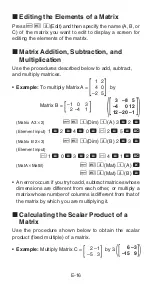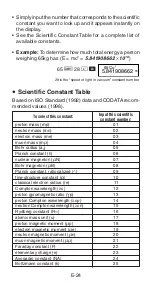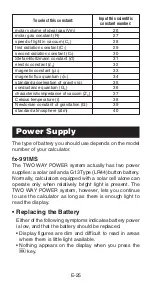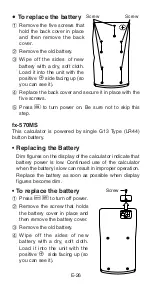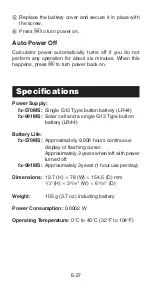
E-21
k
Calculating the Outer Product of
Two Vectors
Use the procedure described below to obtain the outer
product for two vectors.
•
Example:
To calculate the outer product of Vector A and
Vector B
(Result:
(– 3, 18, 13)
)
(VctA
VctB)
A
z
3
(Vct)
1
(A)
-
A
z
3
(Vct)
2
(B)
=
• An error occurs in the above procedure if you specify
vectors of different dimensions.
k
Determining the Absolute Value of
a Vector
Use the procedure shown below to obtain the absolute
value (size) of a vector.
•
Example:
To determine the absolute value of Vector C
(Result:
11.90965994
)
(AbsVctC)
A
A
A
z
3
(Vct)
3
(C)
=
•
Example:
To determine the size of the angle (angle unit:
Deg) formed by vectors A = (–1 0 1) and B = (1 2 0), and
the size 1 vector perpendicular to both A and B.
(Result:
108.4349488
°
)
cos
,
which becomes
cos
–1
Size 1 vector perpendicular to both A and B
(3-dimensional Vector A)
A
z
1
(Dim)
1
(A)
3
=
(Element input)
D
1
=
0
=
1
=
t
(3-dimensional Vector B)
A
z
1
(Dim)
2
(B)
3
=
(Element input)
1
=
2
=
0
=
t
(VctA
⋅
VctB)
A
z
3
(Vct)
1
(A)
A
z
r
1
(Dot)
A
z
3
(Vct)
2
(B)
=
(A
⋅
B)
A B
A
B
A
B
(A
⋅
B)
A B










